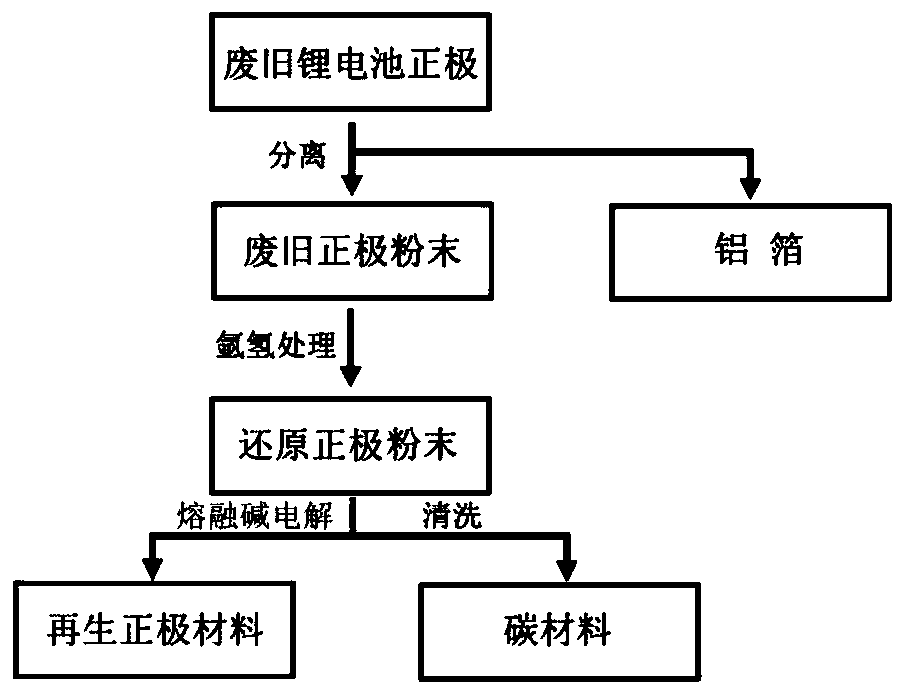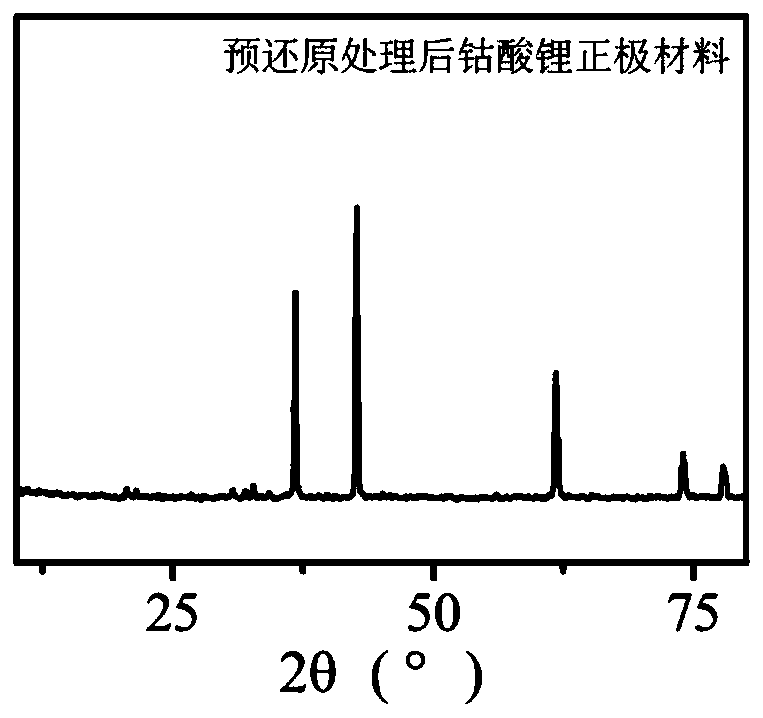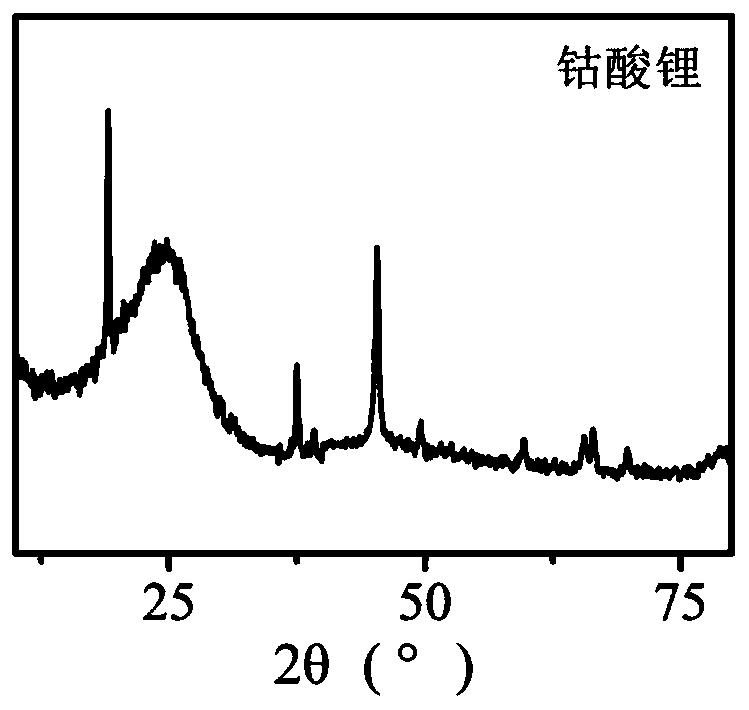Method for regenerating cathode material of waste lithium ion battery through electrolysis of molten alkali
A lithium-ion battery, cathode material technology, applied in electrodes, electrolysis process, electrolysis components, etc., can solve the problems of high cost, easy secondary pollution, complex process flow, etc., achieve high recovery efficiency, is conducive to recovery, metal resources The effect of reuse
- Summary
- Abstract
- Description
- Claims
- Application Information
AI Technical Summary
Problems solved by technology
Method used
Image
Examples
Embodiment 1
[0034] Example 1 is to prepare the regenerated high-quality lithium cobaltate positive electrode material by one-step electrolysis in the mixed molten alkali system of KOH and LiOH by pre-reducing the processed waste lithium ion battery positive electrode lithium cobaltate material, such as figure 1 As shown, the specific steps are:
[0035] (1) Pretreatment of waste lithium-ion battery positive electrode materials: Disassemble the waste lithium cobalt oxide battery after discharge treatment, put it into a reduction tube furnace, pass in argon-hydrogen mixed gas, and control the H 2 Velocity is 50 m 3 / h, control the flow rate of Ar to 50 m 3 / h, after heating up to 200°C and keeping it warm for 2 h, scrape off the treated waste lithium cobaltate powder from the aluminum foil;
[0036] (2) Molten alkali electrolysis: Mix and grind KOH and LiOH at a mass ratio of 3:1, heat to 300 °C and melt, add pre-reduced waste lithium cobaltate powder, and the mass ratio of positive elect...
Embodiment 2
[0043]Example 2 Prepare the regenerated high-quality lithium manganate cathode material by one-step electrolysis in the mixed molten alkali system of KOH and LiOH with the lithium manganate cathode material of the waste lithium ion battery treated in the pre-reduction atmosphere, such as figure 1 As shown, the specific implementation method is:
[0044] (1) Pretreatment of waste lithium-ion battery positive electrode materials: Disassemble the waste lithium manganate battery after discharge treatment, put it into a reduction tube furnace, pass in argon-hydrogen mixed gas, and control H 2 Velocity is 50 m 3 / h, control the flow rate of Ar to 50 m 3 / h, after heating up to 200°C and keeping it warm for 2 h, scrape off the treated waste lithium manganate powder from the aluminum foil;
[0045] (2) Molten alkali electrolysis: KOH and LiOH are mixed and ground at a mass ratio of 3:1, heated to 300 °C and melted, and the waste lithium manganate powder after pre-reduction treatment...
PUM
| Property | Measurement | Unit |
|---|---|---|
| size | aaaaa | aaaaa |
| thickness | aaaaa | aaaaa |
Abstract
Description
Claims
Application Information
 Login to View More
Login to View More - R&D
- Intellectual Property
- Life Sciences
- Materials
- Tech Scout
- Unparalleled Data Quality
- Higher Quality Content
- 60% Fewer Hallucinations
Browse by: Latest US Patents, China's latest patents, Technical Efficacy Thesaurus, Application Domain, Technology Topic, Popular Technical Reports.
© 2025 PatSnap. All rights reserved.Legal|Privacy policy|Modern Slavery Act Transparency Statement|Sitemap|About US| Contact US: help@patsnap.com



